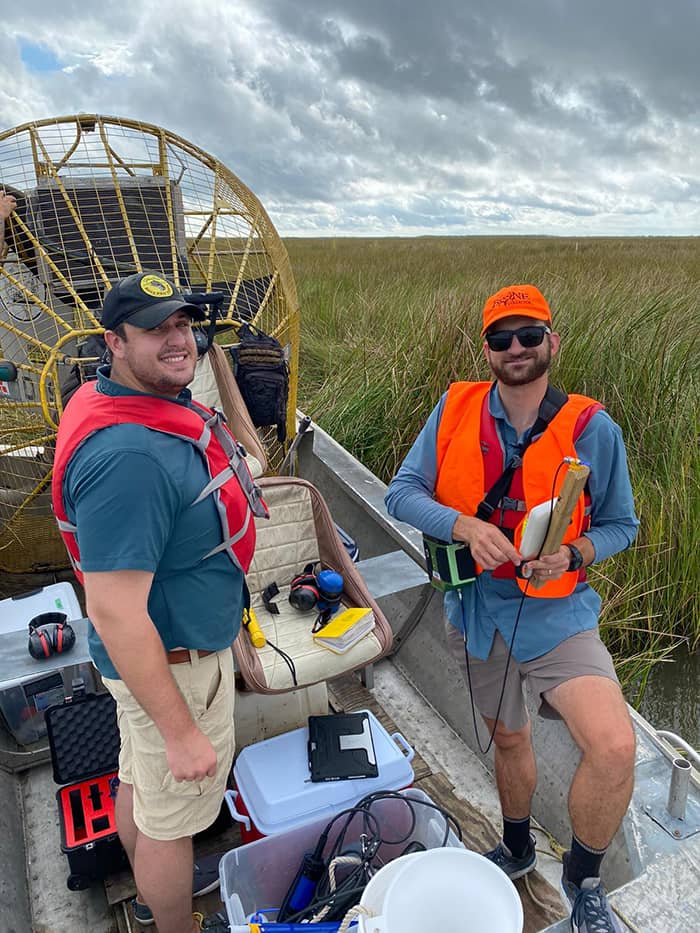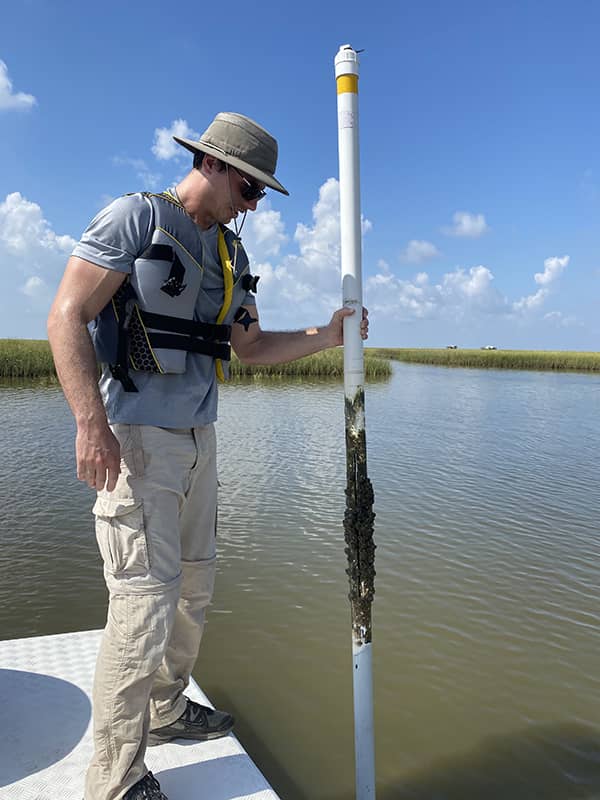< Blog
September 22, 2021
Collecting water gauges
By Marc SimardThe Delta-X campaign is not finished yet… We have teams on the water and in the air.
 Matt Weiser and Josh Harrington (WQ team from Boston U.) collect water surface reflectance measurements
Matt Weiser and Josh Harrington (WQ team from Boston U.) collect water surface reflectance measurements
Yesterday, the JPL and UNC teams joined the Water Quality team in the field. JPL and UNC are retrieving the water level gauges and collecting a few ADCP transects (i.e. water discharge) that could not be collected prior to hurricane Ida. The WQ team is still collecting water surface reflectance with portable spectrometer. Friday is their last day in the field.
The JPL and UNC teams with their respective boat captains are collecting the 58 gauges… or whichever survived Ida.
 Alex Christensen, Marc Simard, and Daniel Jensen from JPL collect water level gauges
Alex Christensen, Marc Simard, and Daniel Jensen from JPL collect water level gauges
 Wayana Dolan and John Mallard from UNC collect water level gauges
Wayana Dolan and John Mallard from UNC collect water level gauges
To date, we lost only 3 out of 17 gauges surveyed. Other gauges located in brackish water were colonized by barnacles, but don’t be alarmed, we got data! At each gauge, the teams also records accurate RTK-GPS measurements to obtain the absolute water surface level. Yesterday, we went on the eastern edge of Terrebonne and today, we went on the Wax Lake Outlet and the Intra Coastal Waterway (ICWW).
 A gauge in brackish water got covered in barnacles
A gauge in brackish water got covered in barnacles
In other good news, AVIRIS-NG is in town to document the status of the wetlands that were observed by radars and survey the damage from hurricane Ida—remember that the UAVSAR only imaged the region after Ida. AVIRIS-NG will begin its science flights tomorrow, collecting data in the Terrebonne basin. This post-Ida dataset will be compared to the pre-Ida dataset to provide an unprecedented assessment of the impact of hurricanes on wetlands. Weather-wise, we are fortunate as a cold front just wiped the cloud cover off the sky for the next few days. We expect to cover all planned vegetation lines within the next 3 days.

